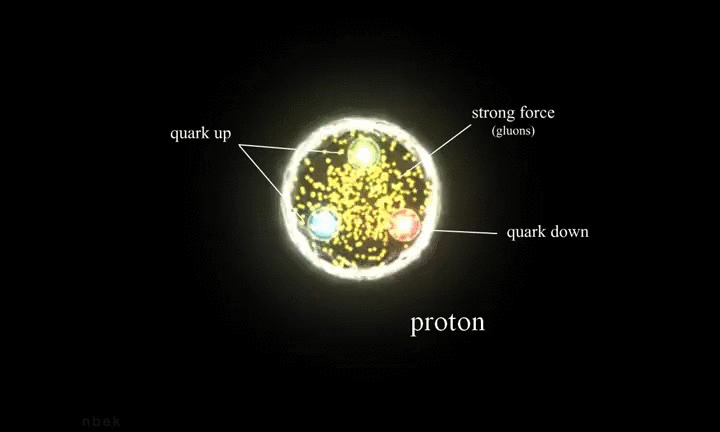- 3 May 2024
- 873
Condensed Matter Physics: Uniting Theory with Experiment

Condensed Matter Physics, often abbreviated as CMP, is a branch of physics that delves into the study of matter in its condensed states, such as solids and liquids, where particles are closely packed together. This field seeks to understand the macroscopic and microscopic properties of materials, ranging from electronic behavior to mechanical properties, and from magnetic phenomena to phase transitions.
What is condensed matter physics?
Condensed matter physics focuses on the physical properties of matter in condensed phases, emphasizing the behavior of large numbers of particles interacting with each other. It explores how these interactions give rise to various phenomena observed in solids and liquids, including electrical conductivity, magnetism, and thermal conductivity.
Importance of condensed matter physics
The study of condensed matter physics is crucial for numerous technological advancements and scientific breakthroughs. Understanding the behavior of materials at the atomic and subatomic levels enables the development of new materials with tailored properties, which find applications in electronics, telecommunications, healthcare, and renewable energy.
Historical Background
Early developments
Condensed matter physics traces its roots back to the late 19th and early 20th centuries when scientists began investigating the properties of solids and liquids using classical mechanics and thermodynamics. Pioneering work by physicists like Albert Einstein and Max Planck laid the foundation for understanding phenomena such as specific heat capacities and the photoelectric effect.
Key milestones in the field
The field experienced significant advancements throughout the 20th century, with groundbreaking discoveries such as the development of quantum mechanics, the theory of superconductivity, and the discovery of novel phases of matter. These milestones revolutionized our understanding of condensed matter systems and paved the way for further exploration.
Theoretical Framework
Quantum mechanics and its role
Quantum mechanics provides the theoretical framework for understanding the behavior of particles at the atomic and subatomic levels. Concepts such as wave-particle duality, quantum entanglement, and wave functions play a central role in describing the electronic structure of solids and predicting their properties.
Statistical mechanics and thermodynamics
Statistical mechanics and thermodynamics provide tools for understanding the collective behavior of particles in condensed matter systems. These theories allow physicists to describe macroscopic properties such as temperature, pressure, and entropy in terms of the microscopic interactions between particles.
Band theory and electronic properties
Band theory explains the electronic structure of solids by considering the arrangement of electrons in energy bands. This theory elucidates phenomena such as electrical conductivity, band gaps, and semiconductor behavior, forming the basis for modern electronics and semiconductor technology.
Experimental Techniques
Overview of experimental methods
Experimental techniques in condensed matter physics encompass a wide range of approaches, including spectroscopy, microscopy, and scattering methods. These techniques enable researchers to probe the structural, electronic, and magnetic properties of materials with high precision and resolution.
Advanced tools and equipment
Advances in instrumentation have led to the development of sophisticated tools such as scanning tunneling microscopes, atomic force microscopes, and synchrotron radiation sources. These instruments allow scientists to investigate materials at the atomic and molecular levels, providing insights into their fundamental properties.
Role of interdisciplinary approaches
Interdisciplinary collaborations between physicists, chemists, materials scientists, and engineers have become increasingly important in condensed matter physics. By combining expertise from multiple disciplines, researchers can tackle complex problems and develop innovative solutions to real-world challenges.
Key Concepts in Condensed Matter Physics

Phase transitions
Phase transitions are phenomena where a system undergoes a change in its macroscopic properties, such as its state of matter or symmetry. Examples include melting, freezing, and the transition between magnetic phases, which are of fundamental importance in condensed matter physics.
Topological order
Topological order refers to a unique type of order that is insensitive to local perturbations and is characterized by global properties of a system. This concept has led to the discovery of new phases of matter, such as topological insulators and topological superconductors, with potential applications in quantum computing and electronics.
Quantum Hall effect
The Quantum Hall effect is a quantum mechanical phenomenon observed in two-dimensional electron systems subjected to strong magnetic fields. It manifests as quantized Hall conductivity, which is a hallmark of topological order and has paved the way for the study of exotic states of matter.
Superconductivity
Superconductivity is a phenomenon where certain materials exhibit zero electrical resistance below a critical temperature. This remarkable property has numerous practical applications, including magnetic levitation, high-speed magnetic resonance imaging, and the development of sensitive detectors.
Magnetism
Magnetism is a fundamental property of matter arising from the alignment of magnetic moments within a material. Condensed matter physicists study various magnetic phenomena, including ferromagnetism, antiferromagnetism, and spintronics, with implications for data storage, magnetic sensors, and quantum information processing.
Recent Advances and Research Trends
Emergence of new materials
Recent years have witnessed the discovery of novel materials with extraordinary properties, such as graphene, topological insulators, and high-temperature superconductors. These materials hold promise for revolutionizing electronics, photonics, and energy storage technologies.
Quantum computing and information
Condensed matter physicists are actively involved in the development of quantum computing and quantum information technologies. By harnessing the principles of quantum mechanics, researchers aim to build powerful quantum computers capable of solving complex problems that are intractable for classical computers.
Nanotechnology applications
Nanotechnology, which involves manipulating matter at the nanoscale, has become a thriving area of research in condensed matter physics. Nanomaterials exhibit unique properties due to their small size, leading to applications in electronics, medicine, catalysis, and environmental remediation.
Multidisciplinary collaborations
Collaborations between physicists, chemists, biologists, and engineers are driving innovation in condensed matter physics. By combining expertise from diverse fields, researchers can address complex challenges and develop interdisciplinary solutions with real-world impact.
Challenges and Future Directions
Understanding complex phenomena
One of the key challenges in condensed matter physics is understanding and predicting the behavior of complex materials and phenomena. This requires developing new theoretical frameworks, computational techniques, and experimental methods to unravel the underlying physics.
Manipulating materials at the nanoscale
Manipulating materials at the nanoscale poses technical challenges due to the intricacies involved in controlling matter at such small dimensions. Overcoming these challenges requires advancements in nanofabrication techniques, metrology, and characterization methods.
Sustainability and environmental implications
As the demand for advanced materials continues to grow, it is essential to consider the environmental impact of condensed matter research and technology. Developing sustainable materials and manufacturing processes is crucial for mitigating environmental harm and ensuring a greener future.
Conclusion
In conclusion, condensed matter physics plays a vital role in advancing our understanding of the fundamental properties of matter and in driving technological innovation. By uniting theory with experiment, researchers in this field continue to push the boundaries of scientific knowledge and pave the way for new discoveries and applications.
FAQs
What is condensed matter physics?
Condensed matter physics is a branch of physics that studies the physical properties of matter in its condensed states, such as solids and liquids, at the atomic and subatomic levels.
Why is condensed matter physics important?
Condensed matter physics is important for technological advancements and scientific breakthroughs, enabling the development of new materials with tailored properties for various applications.
What are some recent advances in condensed matter physics?
Recent advances in condensed matter physics include the discovery of novel materials, developments in quantum computing, advancements in nanotechnology, and interdisciplinary collaborations.
What are the challenges in condensed matter physics?
Challenges in condensed matter physics include understanding complex phenomena, manipulating materials at the nanoscale, and addressing sustainability and environmental implications.
How can I get involved in condensed matter physics research?
You can get involved in condensed matter physics research by pursuing a degree in physics, materials science, or a related field, and by seeking opportunities for research internships or graduate studies.

